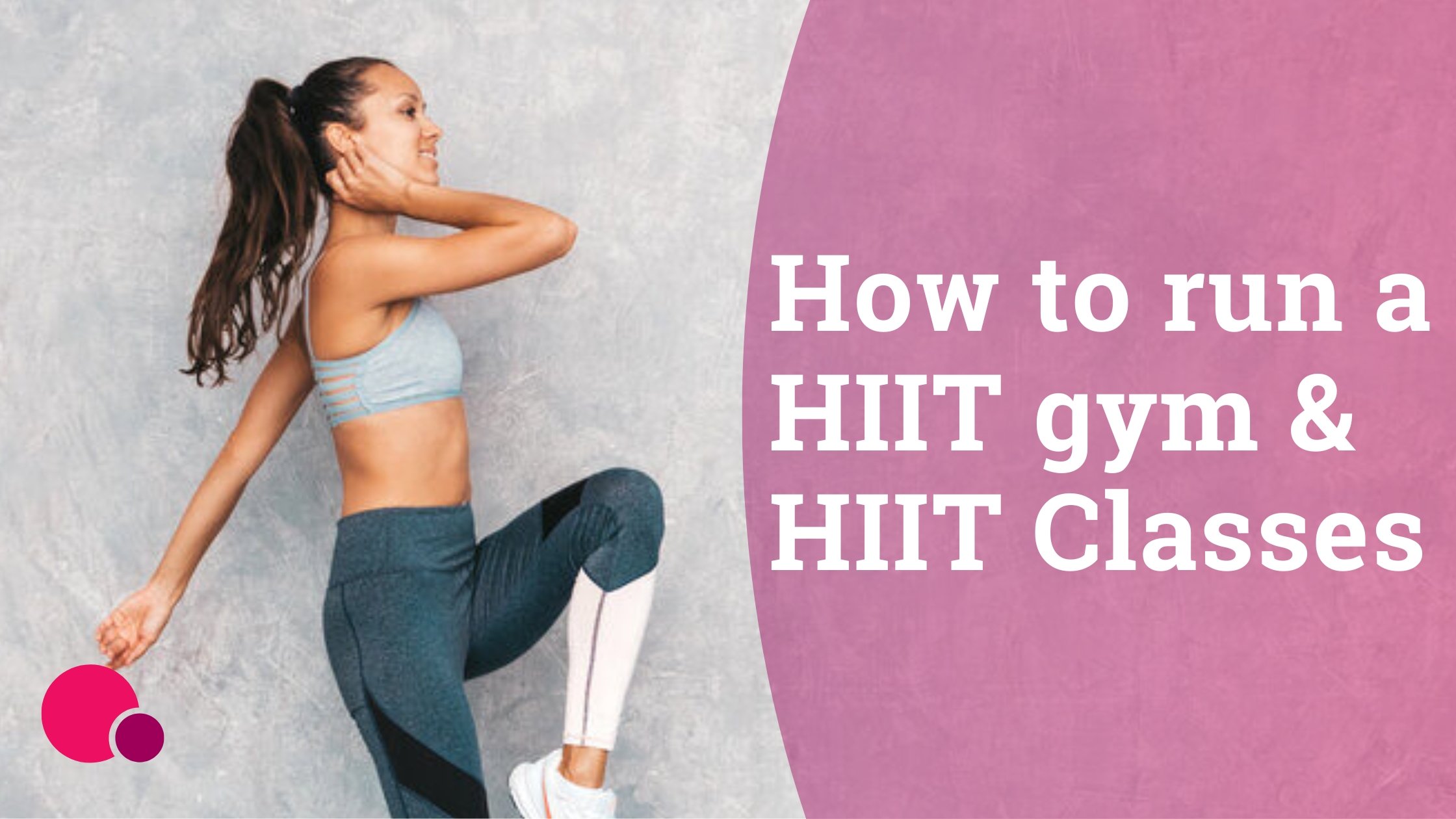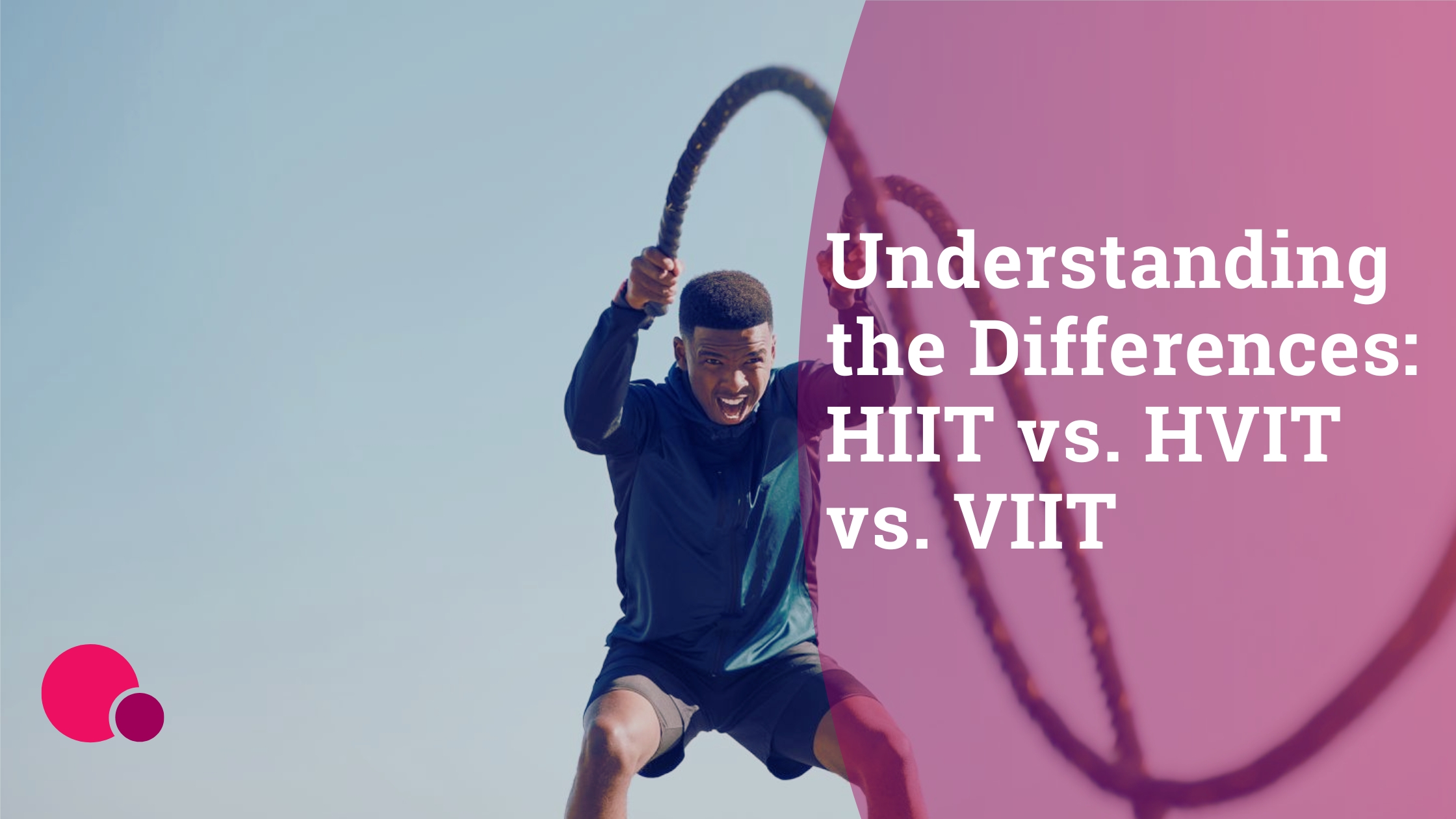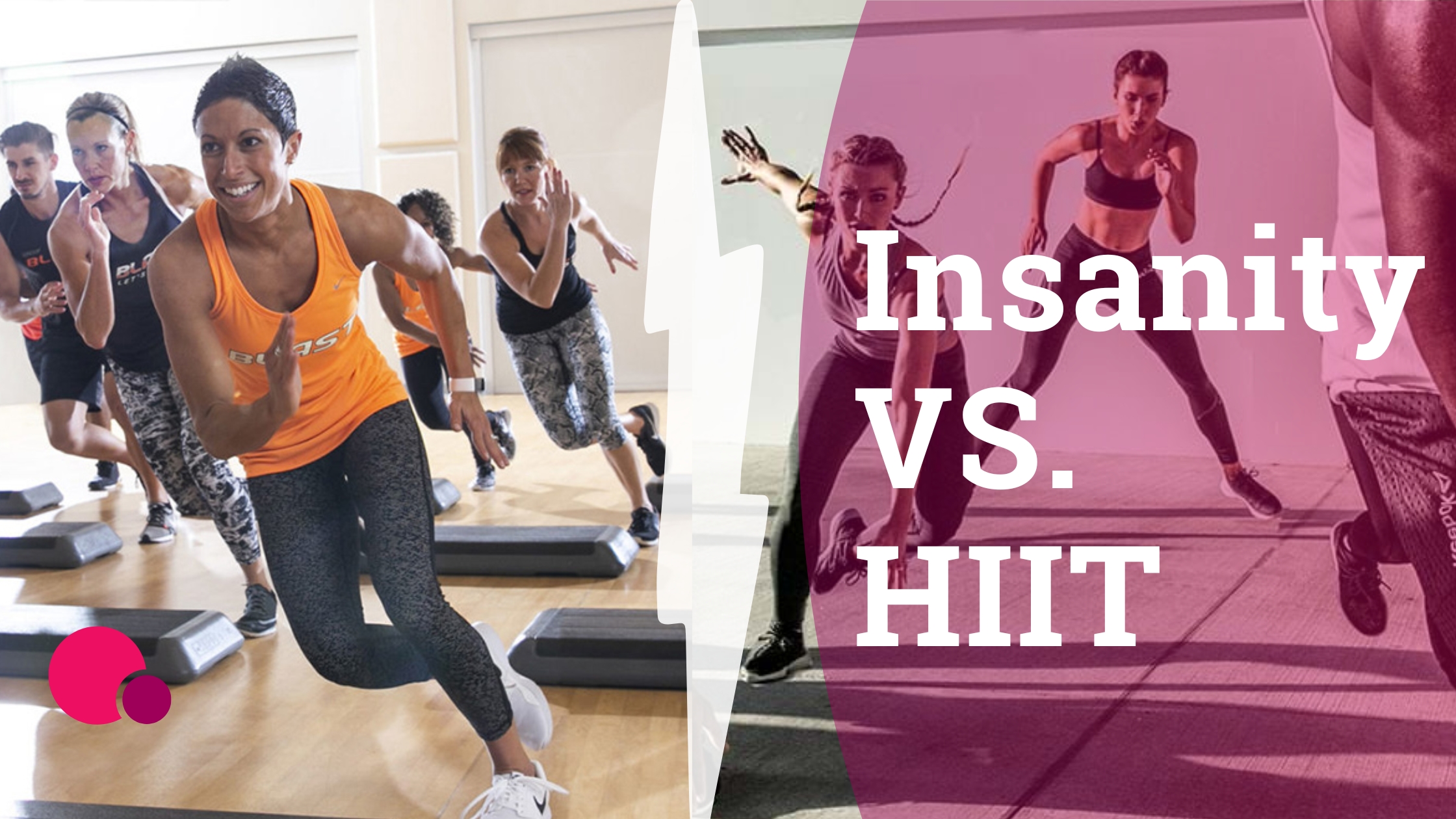The benefits of HIIT, or High-Intensity Interval Training, lie in its dynamic and efficient approach, combining short bursts of intense exercise with brief rests.
This method makes workouts more engaging and enhances cardiovascular health, builds muscle strength, and improves overall endurance.
HIIT's adaptability to various activities, from sprinting to cycling to bodyweight exercises, makes it suitable for everyone, including seasoned athletes and beginners. It's an ideal fitness solution for those with busy schedules seeking noticeable health and fitness improvements.
Find the best ways to use customer reviews
to grow your business
DOWNLOAD NOW 
Key takeaways
-
HIIT (High-Intensity Interval Training) is a dynamic and efficient fitness approach involving intense exercise bursts followed by short rests, suitable for everyone.
-
HIIT offers many benefits, including improved cardiovascular health, enhanced metabolism, increased muscle strength and tone, better flexibility and balance, and improved blood sugar control.
-
HIIT is adaptable and can be customized for various fitness levels, making it suitable for both seniors and youth.
-
Safety and efficiency are essential in HIIT workouts, involving proper warmups, hydration, rest, and listening to your body.
-
Incorporating HIIT into your fitness routine can be transformative, offering tangible results in terms of fat burning, muscle building, and overall fitness improvements.
Comprehensive benefits of HIIT
High-Intensity Interval Training, or HIIT, provides various benefits, like better heart health and enhanced flexibility.
We will explore these benefits and explain how HIIT goes beyond traditional workout expectations.
Enhanced cardiovascular health
High-Intensity Interval Training (HIIT) is a powerhouse for improving cardiovascular health because it optimizes your body's energy systems, reducing obesity risks and associated health issues.
HIIT leads to enhanced cardiovascular fitness, fortifying your heart and circulatory system.
To illustrate, a 2017 study involving school children showed remarkable improvements in cardiorespiratory capacity with HIIT, outperforming traditional exercise benefits.
These gains not only elevate heart and lung function but also aid in fat reduction.
To incorporate HIIT effectively for cardiovascular health, start with exercises like jumping jacks or high knees, gradually increasing the intensity.
Improved metabolic rate
HIIT sessions dramatically elevate your metabolic rate because these vigorous workouts push your body to burn more calories, thus enhancing your metabolism.
This leads to weight loss and a sustained calorie deficit, even post-workout, known as the 'afterburn effect.' Moreover, HIIT boosts resting energy expenditure, keeping your calorie burn high even during rest.
Combine exercises like sprints and burpees for a balanced HIIT routine, ensuring a mix that challenges various muscle groups.
Increased muscle strength and tone
HIIT complements weight training by promoting muscle growth and strength, especially in the core and major muscle groups.
Its high-intensity nature and recovery periods help muscles adapt and strengthen.
Focus on exercises like mountain climbers and plank jacks for targeted core strengthening in your HIIT routine.
Enhanced flexibility and balance
HIIT is not just about intensity; it significantly improves flexibility and balance. The variety of movements in HIIT exercises, from dynamic stretches to balance-focused activities, contributes to enhanced body flexibility.
Regular HIIT sessions have been shown to boost balance and agility, which are crucial for maintaining mobility.
Incorporate exercises like lunges and squats in your HIIT routine for optimal balance and coordination.
Improved blood sugar control
HIIT is particularly beneficial for individuals with Type 2 Diabetes, as it enhances insulin sensitivity and helps manage blood sugar levels.
It also aids in controlling elevated blood pressure, a common issue in diabetes. A notable study in "Aging Clinical and Experimental Research" revealed that a 16-week HIIT program significantly improved insulin sensitivity in participants with Type 2 Diabetes.
If you have diabetes, consider integrating moderate HIIT activities like brisk walking or light cycling, and consult your healthcare provider for personalized advice.
Incorporating HIIT into your fitness regimen transforms your physique and brings comprehensive health benefits.
It's a holistic approach that enhances muscle strength, flexibility, balance, and metabolic health, catering to various fitness and health needs.
Improved mental well-being and reduced stress levels
High-Intensity Interval Training (HIIT) not only benefits physical health but also plays a significant role in improving mental well-being and reducing stress levels.
A systematic review and meta-analysis published in the British Journal of Sports Medicine revealed that HIIT led to moderate improvements in mental well-being, decreased depression severity, and reduced perceived stress compared with non-active controls.
Doing High-Intensity Interval Training (HIIT) can help improve both your physical and mental health, making it a good exercise approach for overall fitness and wellness.
HIIT for various fitness levels
High-Intensity Interval Training (HIIT) is a versatile fitness method suitable for individuals of all ages and stages in life, from energetic teenagers to active seniors.
Here's a breakdown of how HIIT can benefit several fitness levels.
HIIT for seniors: safe and effective
HIIT is an excellent option for seniors, offering a safe and efficient way to maintain fitness.
This approach involves short, manageable bursts of activity, ideal for those who find longer workouts too demanding.
A key point to consider is HIIT's ability to burn 25% to 30% more calories than traditional methods.
Safe, low-impact exercises such as brisk walking or stationary cycling are ideal for older adults.
A 70-year-old, for instance, might opt for intervals of brisk walking instead of prolonged jogging, reducing the risk of injury while efficiently burning calories.
A practical routine could begin with seated leg lifts, transitioning to light standing cardio exercises.
With weekly sessions, this gradual progression allows for safe and consistent fitness development in seniors.
HIIT for youth: building lifelong fitness habits
HIIT offers the younger generation an accessible, cost-effective way to stay fit. It's ideal for students or young professionals with busy schedules.
A study from the "Archives of Physical Medicine and Rehabilitation" highlighted the cost-effectiveness of HIIT compared to Moderate Intensity Steady-State (MISS) training, particularly in people with coronary artery disease attending cardiac rehabilitation.
This study underscores HIIT's value for youth, who can perform exercises like jump squats and burpees anywhere, anytime, without expensive gym memberships or equipment.
This approach facilitates the development of sustainable fitness habits from a young age.
Customizing HIIT for post-injury rehabilitation
Adapting HIIT for post-injury rehabilitation is crucial for a safe and effective recovery. It allows for a tailored exercise regimen that can gradually increase in intensity.
For individuals recovering from an injury, starting with low-impact HIIT routines and slowly incorporating more challenging exercises is key.
Different models of HIIT, such as Tabata, 30:30, and 30-20-10, can be structured to create the desired workload while allowing for appropriate recovery.
Avoiding overly strenuous workouts and ensuring sufficient recovery time is vital, a common mistake in HIIT programming that can lead to setbacks.
Consulting with a healthcare professional is essential to tailor the HIIT program to specific rehabilitation needs.
Safety and efficiency in HIIT training
While High-Intensity Interval Training (HIIT) is renowned for its fitness benefits, it's crucial to approach your HIIT workouts with a focus on safety and efficiency because it helps prevent injuries and ensures maximum effectiveness.
Below are some tips and strategies for achieving safety and efficiency in your HIIT training.
Navigating workouts safely
Understanding your personal fitness threshold is critical in HIIT, recognize when your body signals to slow down or take a break to prevent overexertion.
It's like knowing the limits of your car on a fast-paced road.
If you have any health concerns, it's important to inform your instructor or consult your doctor for tailored workout modifications.
Identifying and mitigating overexertion risks
Be vigilant about signs of overexertion, such as unusual fatigue or mood swings.
Imagine pushing through a workout when your body screams for a break – it's counterproductive. If these signs appear, pause your training and seek medical advice.
Remember, rest days are your body's time to recharge, like giving your phone the much-needed time to power up.
Maximizing workout efficiency
To keep your HIIT workouts efficient, mix up your exercises. Think of it as adding different spices to a meal – it keeps things exciting and balanced.
Just as important is rest. It's the unsung hero of any workout routine, giving your muscles time to recover and grow stronger.
Importance of warmup and cooldown
A warmup is essential for preparing your body for the high-intensity workout ahead because it increases blood flow to the muscles, raises your body's temperature, and helps you mentally prepare for the workout.
Dynamic stretching is a great way to warm up, as it involves moving your muscles through their full range of motion.
On the other hand, cooldowns are important for helping your body recover after a HIIT session, lowering your heart rate, preventing dizziness or fainting, and reducing the risk of injury.
Static stretching is an excellent way to cool down, as it helps to relax the muscles and reduce soreness.
Remember to take a few minutes to stretch after your workout and gradually bring your heart rate back to its resting rate.
Skipping these is like jumping into a sprint without stretching – risky and can lead to injury.
Hydration and nutrition for HIIT
Staying hydrated during HIIT is like keeping your car well-oiled; it's essential for smooth performance. Don't wait to feel thirsty; keep water at hand and sip regularly.
After your workout, refueling with a balanced meal is like giving your body the right fuel. A combination of proteins and complex carbs helps in recovery and building muscle.
By incorporating these safety and efficiency practices into your HIIT routine, you're not just chasing results but also ensuring your journey is safe, enjoyable, and sustainable.
Listen to your body, respect its limits, and remember that fitness is a marathon, not a sprint.
FAQs
What makes HIIT an effective workout for cardiovascular health?
HIIT's alternating periods of high-intensity exercise and rest make the heart work efficiently, improving cardiovascular endurance and overall heart health.
Can HIIT help with weight loss and fat burning?
Yes, the high intensity of HIIT workouts boosts metabolism, leading to more calories burned during and after exercise, which aids in weight loss and fat reduction.
Is HIIT suitable for beginners in fitness?
Absolutely, HIIT can be adapted for beginners by modifying the intensity of exercises and shortening the high-intensity intervals, allowing for a gradual build-up of stamina and strength.
How often should I incorporate HIIT into my fitness routine?
It's recommended to do HIIT workouts 2–3 times per week, allowing for rest or lower-intensity workouts on other days to prevent overtraining and injury.
What are some safety tips to keep in mind when doing HIIT?
To ensure safety during High-Intensity Interval Training (HIIT), it is crucial to begin with a proper warmup, stay hydrated, listen to your body to avoid overexertion, and allow for a cooldown period after the workout.
Find the best ways to use customer reviews
to grow your business
DOWNLOAD NOW 










